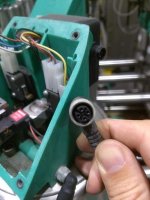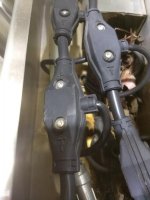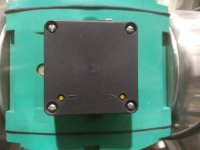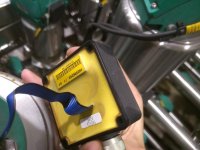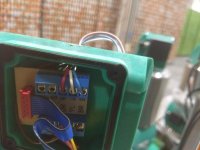Dryhops
Member
We are looking to add a 16 tank farm, which will include a CIP set and a valve matrix of approximately 80 valves.
Our existing tanks do not use a matrix, so the I/O count is relatively low and is accomplished using a few POINT I/O racks, each with about 20 modules and configured in a ring. Control is done with 1769-L33ER.
The matrix will require 480 DI and 240 DO (3 DO actuation, 6 feedback per valve). Since POINT only offers up to 8 point modules, I think I need a solution with higher I/O density, ideally 32. So here is where I have some questions:
For this project, I'll need a controller with over 4MB program memory (we nearly maxed our 2MB). While the newer compactlogix controllers have this, there seem to be some compatibility issues with POINT IO and our 1769-L33ER CompactLogix controller according to this article: https://rockwellautomation.custhelp.com/app/answers/detail/a_id/772353 so I think sticking with the older line will be safer.
The older 1769 CompactLogix max out at 3MB which is insufficient. Instead I was thinking of using a 1756-L73 ControlLogix that we have on hand. I would just put the matrix on local IO, but the largest chassis is 17 slots and would not accommodate all of the matrix IO that I need. Can a ControlLogix directly control a remote CompactLogix rack? Am I wrong in thinking that I can put a bunch of CompactLogix modules on an adapter and treat it like a higher density POINT I/O rack?
So in summary, does this set up make sense and would it be compatible with my existing system? Again, this will all be connected to the existing ring.
Thank you for your time.
Our existing tanks do not use a matrix, so the I/O count is relatively low and is accomplished using a few POINT I/O racks, each with about 20 modules and configured in a ring. Control is done with 1769-L33ER.
The matrix will require 480 DI and 240 DO (3 DO actuation, 6 feedback per valve). Since POINT only offers up to 8 point modules, I think I need a solution with higher I/O density, ideally 32. So here is where I have some questions:
For this project, I'll need a controller with over 4MB program memory (we nearly maxed our 2MB). While the newer compactlogix controllers have this, there seem to be some compatibility issues with POINT IO and our 1769-L33ER CompactLogix controller according to this article: https://rockwellautomation.custhelp.com/app/answers/detail/a_id/772353 so I think sticking with the older line will be safer.
The older 1769 CompactLogix max out at 3MB which is insufficient. Instead I was thinking of using a 1756-L73 ControlLogix that we have on hand. I would just put the matrix on local IO, but the largest chassis is 17 slots and would not accommodate all of the matrix IO that I need. Can a ControlLogix directly control a remote CompactLogix rack? Am I wrong in thinking that I can put a bunch of CompactLogix modules on an adapter and treat it like a higher density POINT I/O rack?
So in summary, does this set up make sense and would it be compatible with my existing system? Again, this will all be connected to the existing ring.
ControlLogix 1756-L73 with only a dual port ethernet adapter in small chassis, no local IO
CompactLogix I/O rack with 1769-AENTR and roughly 24 modules for the matrix
Point I/O rack with 1734-AENTR for the tanks and CIP set.
CompactLogix I/O rack with 1769-AENTR and roughly 24 modules for the matrix
Point I/O rack with 1734-AENTR for the tanks and CIP set.
Thank you for your time.



